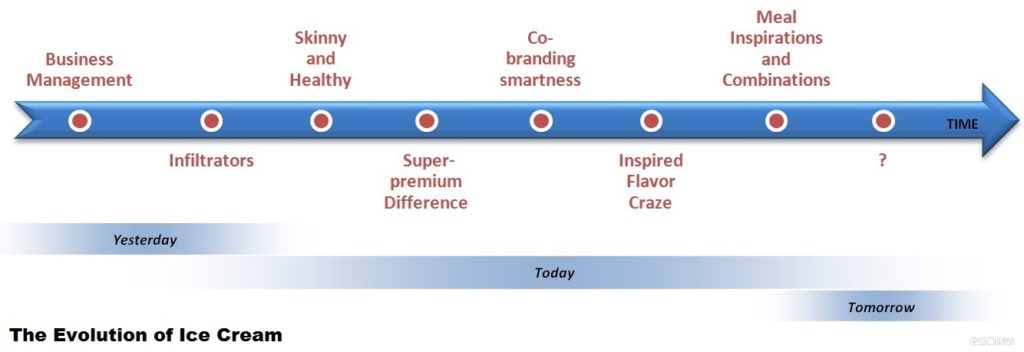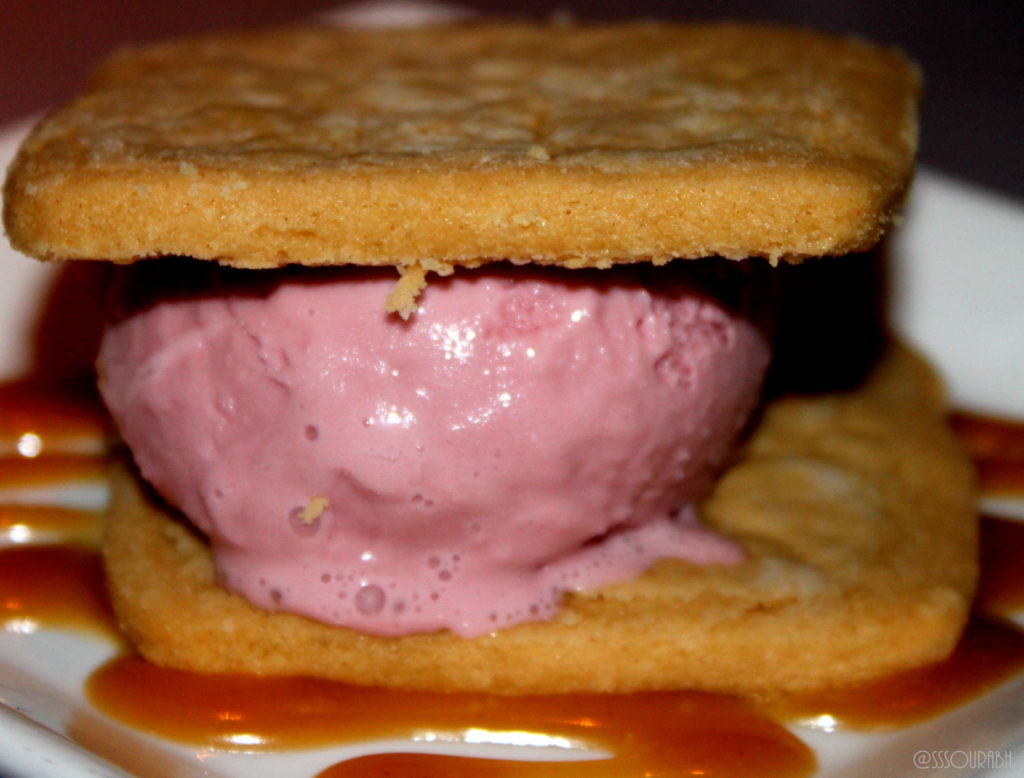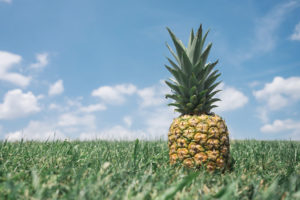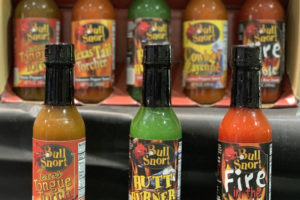The Evolution of the Ice Cream Market
Classic ice cream, as we knew of it as kids, has now evolved into a whole new plethora of ice cream treats. From meaty to vegetably, from spicy to cheesey, and from an entire meal to a teatime substitute, I have identified several trends that I have tasted, relished, appalled, and naturally, documented.
Kids, to whom ice cream is conventionally marketed, may no longer be the target segment for the out-of-the-box flavors, explaining the namesake title of this article. Like many businesses, the ice cream business has to also grow and stretch beyond traditional norms, which is why brands like Haagen daaz choose sexual connotations to position themselves as an adult brand, or why the existence of an evolution of ice cream trends exists in the first place. The new target market comprises of invidividuals that are not segmented by age or demographics, but by tastes and mindsets. I feel that my Mindset Framework applies best to ice cream eaters, driven so strongly by the emotional connection with this delectable treat! These would be individuals high on emotional attraction, and depending on the nature of ingredients in the ice cream, also high on emotional intelligence. Thus, the passion and innovation mindsets are most apt for businesses wishing to cater this niche but growing category of non-traditional ice cream flavors.

The ice cream market itself can perhaps never decline; it has however reached maturity, thus explaining the many trends that ice cream makers have taken to keep it alive. It certainly is working. The ice cream market, despite being rather mature, has been doing extremely well, although many have touted global warming and record breaking hot weathers as the cause of this.
My curiosity about how this happened has led to a mapping of the evolution of ice cream, and what may lie in store! Though the trends are not distinct from each other, with various combinations that give rise to even more diversity, the following figure maps the evolution, trying to grasp the strategy behind each phase.

Business Management
At the onset, generally ice cream companies behave like a business. They make something, sell it, keep selling it, see what sells, and continue selling more of it. Kaboom, you have a market, a business, profits, and ultimately, the economies of scale make the ice cream somewhat commoditized. This explains the variety in quality amidst so many classic makers.
Infiltration
On loving vanilla ice cream, who wouldn’t love it with chocolate chips? Or walnuts? Or a swirl of chocolate? Thus begins an era of infiltrating ice cream with other favorites, at the time limited to things like chocolate chips or gooey swirls of caramel and chocolate. Ice cream floats can fall into this category too, which interestingly are making a comeback, as witnessed by the street long lines outside Philadelphia’s Franklin Fountain.
Skinny and Healthy
On seeing the expanding waist sizes and increasing health concerns, fat free and sugar free versions of aforementioned ice creams begin to hit the market in this phase. The target market here is those consumers who want the indulgence, but want to walk out wearing the same pair of pants. This is a profitable way to diversify the product, as it targets a large and growing segment. Less sugar, sugar substitutes, smaller portions, and sometimes misleading claims rule the roost here.
Super-Premium Difference
Realizing the commoditization of the business, which rightfully erupted from the business management phase, naturally ice cream creators in this phase look for a way to better differentiate their product. So, taking inspiration from luxury products, super premium ice cream is introduced, to give consumers the ultimate indulgence, a divine treat, at a higher price point. Lovers of ice cream inevitably fall for the trick, and at times, the taste is indeed to swoon for! Today every brand has this, with much competition and merger activity on the battleground, but the classic Dove visuals of rich melting swoops and rings strike a recollective memory bell. And when the Godivas and Ghiriadellis begin to enter the ice cream market, its easy for any marketer to see that the industry is booming.
Co-Branding Smartness
Isn’t it nice when you can dive into two indulgences with one scoop? Friendship blossoms between brands of chocolate, cookie dough, cookies and candy, and the world of ice cream, and the infiltration phase is repeated, this time with infiltrants that actually come with brand baggage. Co branding becomes the smart, creative and breakthrough business model. Although perhaps an extension of diversifying from the business phase, this is a new enticement for hungry consumers who can get their Snickers and their ice cream all in one! And hey, its not bad if ice cream makers can share their costs and profits alike with Reeses peanut butter pieces, since the more eggs there are in the basket, the more likely it is that they will be safe together, or crack together. Cannibalization? Brand competition? Leave these worries to the corporates while we lick on.
Inspired Flavors
This is probably where we are now. Similar to the diversification of food inspired body care products, this is perhaps an era of drawing inspiration from the unlikeliest of foods, ranging from rose petals, basil and cinnamon, to pumpkin, cotton candy and bubble gum. Toss in a bit of the original fragments, be it mint leaves or petals or strawberry pieces, and the experience is authenticated. While the flavor craze is probably restricted to boutiques and ice cream parlors, it may not be long before wacky combinations begin hitting grocery stores, which are already densely packed with flavors ranging from watermelon and grapefruit to all the aforemnetioned trends, so gleefully glaring out of identical packaging and confusingly similar artwork.
Meal Inspirations and Combinations
This is what I have noticed a surge in globally. One may call it the Willy Wonka Phase. Instead of simply having flavors, and pieces of other infiltrants, entire meals are being combined to give you an ultimate ice cream experience. Peanut butter and jelly ice cream sandwiches replace the classic sandwich; bourbon ice cream with crunchy corn flakes are akin to a breakfast. These can foray into the savory category too! Ice cream made with salad ingredients, vegetables, sesame seeds, combined together with trends from previous eras, all formulate a world that Tim Burton would enjoy crafting into a whimsical satire.

What’s next?
Combinations: A combination of the last few trends in the evolutionary path will definitely arise, due to the simplicity of doing so. For instance, vanilla ice cream with Nutella and bacon swirl, combines three trends, and still seems like a new fad. Consumers fall for the trick that rematched is cool and new (please do not extrapolate this concept into the dating arena, though). Don’t we always see such recombining activities in every other category too? Recycle and Repackage.
Oxymorons: Nothing catches a wandering mind’s fancy as much as two things that are so not complimentary to be poised together. Olive oil and ice cream, or wasabi and ice cream, belonged in this list once. Although it may seem like a depleting pot of ideas, there are many creative minds who will continue to replenish it. The bottomless pit contains several ideas like ice cream flavors comprising simultaneously of corn and pepper, apple and ketchup, or the recently popular balsamic strawberry, perhaps in the limelight due to its paradoxical name association!
Healthier and greener: Aside from having sustainable processes of production, ice cream makers will perhaps take the green phase to a new level. Having already seen vegetables making their debut into ice cream, it would not be surprising to see more soil-friendly bits making their ways into this treat: grains, beans, perhaps converted into sprouts, and litered over tomato or green tea ice cream, would be a terrific way to sell health and indulgence in one texture-ful package.
More meal replacements: This is by far the wittiest of all trends, and will continue to prevail. With the seemingly common infatuation with ironic ice creams like potato ice cream and fish ice cream, London’s staple fish and chips joint may benefit from a namesake dessert too! Besides this, ice creams could replace entire meal placements, expanding their reach outside of desserts and treats. Take pancake and maple ice cream as a breakfast substitute, the aforementioned fish and chips ice cream as a lunch one, and we have already spoken of several meaty dinner-esque flavors. A day full of ice cream; take that Mr. Willy Wonka for creativity! As long as these are not marketed as literal meal replacements, we won’t have Men’s Health experts tearing us apart for misleading advertising!
More age-barring ice cream: With beer already on the market, there are bars full of inviting cocktails and enticing vodkas that can be blended into ice cream to create college friendly flavors, and perhaps event marketed to the tweens to get a double dose of indulgence! Ice-cream-tinis are next in line, already prevalent in several restaurants that blend the beverage and dessert menus.
Picturesque designs: Flavors are trendy, and almost viral as an inspiration source.Yet, the trend of having designs on ice cream is not as successful, primarily due to its melting nature that prevents things from being in shape. This is perhaps a more apt trend for solid popsicles. Nevertheless, a pinnacle of hope lies in some related trends; ever heard of tie and dye ice cream, for instance? And then there is a photograph of a worldmap inspired ice cream (melting no less, foreboding shambles to come, or more likely due to the difficulty of capturing unmelted ice cream.
Object inspiration: Another catchy trend is be object inspired ice cream. If one can give ice cream the texture of an object that then looks good enough to eat, it may sell to the creative enthusiasts. Much like cakes, which sell in shapes, sizes, and frostings telling stories, then ice cream (at least in the tray from which it is scooped, if not by what it is infused with), will enable storytelling to a marginally similar degree. If we can have chocolates packaged and shaped like an iPhone, then why not ice cream? And related to this is the trend of design for ice cream; how many times have you seen ice cream so decadently placed amidst an architectural construct of chocolate and berries? The universal trend has begun infiltrating the more popular mass based restaurants off late , bringing gourmet into the mass limelight.
Reversion to classics: The lesson to learn from the history of product diversification is this: when things go wild and crazy, purists often introduce the classics to remind generations of where it all started. This was the case with Classic Coke (debuting after the flop of New Coke), and will be the case with ice cream. It is very easy to foresee ‘real’, ‘original’, ‘classic’ and ‘pure’ flavors, like the vanillas and strawberries and chocolates from the days of yore coming back, rising out of the mom-and-pop stores and finding concrete positions in the market, with the promise of delivering to the child within us. Indeed, then all these inner kids can say that they have found their ice cream! (No pun intended)
However, forecasters we may be, but fortune tellers we are not.
We should not be so surprised after all; the way we grow and change with time is concurrent to how our passion for ice cream also evolves. And just like we sometimes reminisce the days of playground naughtiness or lunchbox dilemmas, it is often fun to remember how simple things were in that time too, particularly edibles.



